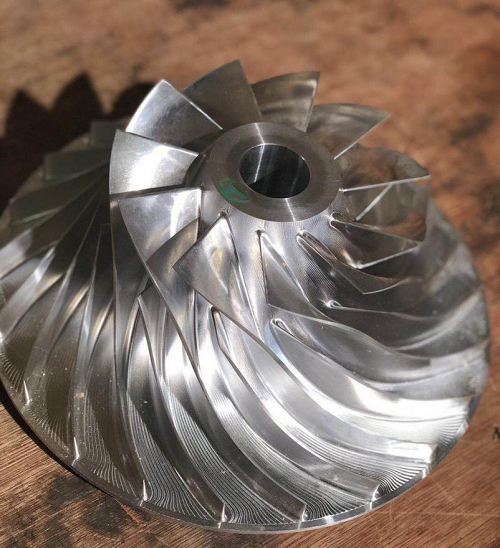
Knowledge
Centrifugal Compressor | About the Moving Parts of Centrifugal Compressors

The moving parts of a centrifugal compressor are the key components for achieving gas compression and energy conversion. Their performance directly affects the efficiency, stability and service life of the entire machine. This article will systematically review the main moving parts in a centrifugal compressor and their functions.
The impeller is the most crucial rotating component in a centrifugal compressor, primarily responsible for doing work on the gas to increase its kinetic energy and pressure. It is connected to the drive end via a shaft and is typically made of high-strength alloy steel, aluminum alloy, titanium alloy, or nickel-based alloy to meet the requirements of corrosion resistance and high-temperature endurance.
The shaft is used to connect the drive device with the impeller, achieving efficient transmission of mechanical energy. It is arranged along the centerline of the compressor and is often connected to the drive equipment through couplings or gearboxes. High-speed operation requires it to have high dynamic balance accuracy and good strength and rigidity.
The bearing system consists of radial bearings and thrust bearings. The former is used to support the radial load of the shaft, while the latter is used to withstand the axial force generated by gas flow. The main function of the bearing is to reduce friction and stably support the rotating shaft. Common lubrication methods include oil film lubrication. In high-speed applications, magnetic levitation bearing systems can also be used to further reduce friction losses.
In terms of power transmission, centrifugal compressors are often connected to the driving device through couplings or speed-increasing gearboxes. Couplings are used to achieve flexible power connection, while gearboxes can provide speed increase when necessary to meet the process requirements of multi-stage compression. The design needs to take into account factors such as high speed, heavy load and thermal expansion.
In terms of sealing systems, modern centrifugal compressors generally adopt dry gas seal technology. A dry gas seal consists of a rotating ring and a stationary ring, achieving efficient sealing through a gas film in a non-contact state. This type of sealing structure can effectively prevent the leakage of compressed gas along the shaft end and is a key component for ensuring the safe operation of high-pressure and high-speed compressors.
Most of the centrifugal compressors in the market are also equipped with adjustable inlet guide vanes (IGV), which are used to regulate the angle and flow rate of the gas before it enters the impeller. The rotational adjustment function of the guide vanes helps achieve flow control and load regulation, thereby enhancing the overall operational efficiency of the system.
In summary, the main moving parts of a centrifugal compressor include the impeller, shaft, bearings, couplings or gearboxes, dry gas seals, and optional adjustable inlet guide vanes. These components work together to form the mechanical foundation for the compressor's efficient and stable operation. Their design and selection should be based on a comprehensive consideration of specific working conditions, gas properties, and speed requirements, and during maintenance, attention should be paid to the condition and wear of these components.
The mechanical structure of a centrifugal compressor is the core foundation of its performance. A deep understanding of the functions and working principles of each moving part is of great significance for improving the operational efficiency of the equipment, extending its service life, and achieving energy conservation and consumption reduction. For further information on the structural differences between axial and mixed-flow compressors, please stay tuned for the subsequent special topics.
Vigor has more than 20 years experience and the professional team in producing the high quality gear reducer housing casting, die-forged gear plates and the gear shafts. If any thing we can help or any parts need to be developed, please contact us at info@castings-forging.com



